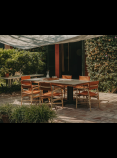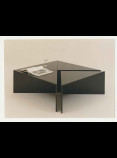Household comfort

Conjunto de sillas Constanza

‘Objects are always around us, even when they're not used. A lamp spends more time turned off than turned on. And when it's turned off, the least it can do is not be bothersome. And the most is to bring joy to life. Keeping us company is the midpoint.’ This is a clear diagnosis of comfort in the words of an expert on the matter. The designer himself points to a revelatory detail when he says that the TMM ‘looks ugly’ if the lampshade is placed at the top of the shaft. Indeed, way up there the balance among the parts is lost and its structural harmony is compromised. The volume of the cylindrical paper or methacrylate body seems to puff out and lose gracefulness. The understanding or intuition of this type of harmonious aggregation of the parts, almost a cadence, is a basic factor in a comfortable home.
And this ineffable balance in Milá's designs can largely be explained because they often originated in his private life: the objects tended to spring from a private or family functional need, like a multi-purpose light source for Aunt Nuria or a ‘presentable’ fly whisk for his wife. They are what the designer calls ‘self-commissions’, which arise when an immediate shortcoming in his environment is detected. And that was the inspiration for the María, a glass table that does not hinder views of the rug under it; the Percherón, a bookshelf that solves the chaos of motorcycle helmets and backpacks at a home’s entrance; and the Salvador chair, which Milá made in order to have decent chairs without overspending the family budget soon after he married. All these items have been industrially produced and enjoyed by users; they have fulfilled their function with solutions that technology was able to standardise because their utility had been proven at home.

